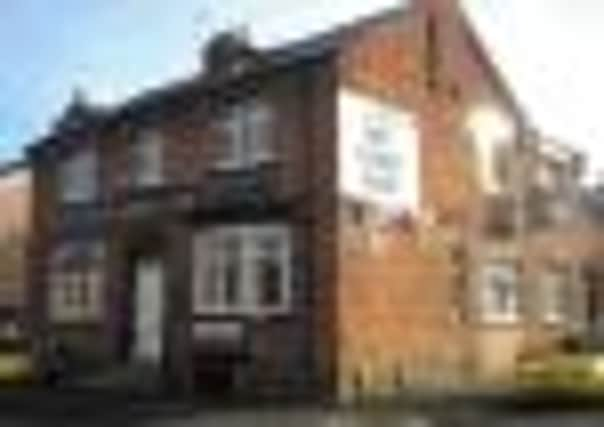On the trail of Leamington’s oldest pubs


Leamington historian Allan Jennings has been researching the history of pubs in the town. He said once there were more than 100 pubs in Leamington but now there are just 59.
“Accurate numbers for pubs is not always easy as at times we have had a significant number of beer houses which required a different type of licence. Also, beer houses turned into pubs and pubs can turn into hotels, said Allan.
Advertisement
Hide AdAdvertisement
Hide Ad“Our research shows that at the end of the 1700s there were two pubs, the Black Dog aka the Dog in High Street and the [1st] Bowling Green which was in Church Street. Both of them were south of the river - this was before the development of the north side.
The Green Man came close to being destroyed last year after closing in August. But new owners re-opened it just before Christmas.
Allan said: “The first directory listing we have for the Green Man is in 1833 when its address was Grove Place, the location of the original pub. In March 1925, a Mr Field submitted plans to the local magistrates for the rebuilding of the Green Man on an adjacent site and asked for an indication that they would not be opposed at the next licensing session; the magistrates approved the proposal.
“On Tuesday February 1 1927 Frederick Hopkins applied for, and was granted, an order authorising the removal of the licence from the premises in Grove Place to ‘a certain house and premises to be built at the corner of Eagle Street and Lower Tachbrook Street, and to be named the Green Man Inn’.
Advertisement
Hide AdAdvertisement
Hide Ad“It was anticipated that the new pub would take six months to build and be open in August 1927 (the original Green Man was demolished around the same time). Fred Hopkins was landlord at both the Grove Place and Tachbrook Street premises, his tenure extending from 1905 until 1934.
“The new pub was referred to as the New Green Man by many locals, and in some directories, and was still listed as the New Green Man in 1940. A lounge was added in the 1960s, most likely following the approval of plans for structural changes on January 4 1960, which also included provision for an off-sales shop and new lavatories; the extended licence for off-sales was granted on January 1 1962.
“Once a Flowers pub, it was subsequently owned by Whitbread until 1991 when it was sold to the Bedford brewery, Charles Wells. In 1996 it also incorporated a Peking and Cantonese restaurant.
“A ‘closing party’ was held at the Green Man on Saturday August 18 2012 and the pub was closed for business the next day. On September 24, an application was made to Warwick District Council for planning permission to demolish the existing pub and build five terraced houses.
Advertisement
Hide AdAdvertisement
Hide Ad“Following the planning application, it was thought that the Green Man would never re-open as a pub, however it did so on December 22 as a free house under the ownership of Babs Kandola, Kul Dhesi and Kam Dhesi; Lynn Unitt remains as licensee and in-house tenant.
“In its heyday the Green Man could quite reasonably be called a community pub which would be regularly frequented by residents in that area. There were many other similar establishments around the town and they usually had darts, dominoes and crib teams as well as football teams in some instances. Others had snooker and pool.”
Allan and his fellow researchers have traced several other old Leamington pubs.
In Brunswick Street there was the Queens Head and the Brunswick which closed in 1964 and was demolished early in 1965. The site is now the car park for The Jet. In Shrubland Street the Joiners Arms was for many years the centre of that community. Then there was the Wheatsheaf on the corner of what was Shrubland Street and Tachbrook Road. In 1956 the Bulldog opened in St Margaret’s Road and the Sun in Splendour opened in Tachbrook Road. In Clemens Street there were the Railway, the Great Western and the Stoneleigh.
Advertisement
Hide AdAdvertisement
Hide AdAllan added: “Landlords very often stayed at a particular pub for many years and in some instances locals referred to the pub by the landlords name rather that the name of the pub - Many will remember the Talbot being referred as Hectors or Hector’s House. Years earlier it was referred to as ‘Mickie’s after Frederick Michael Fathers. Mickie was landlord from September 1919 until November 1951.
“The Great Western was known as Len Beavers, even after he left. He was there from October 1936 until October 1956. The Railway became known as Joe Hartopp’s and again the name was used many years after he left. He was there from September 1911 until January 1953.
“The Talbot is interesting because it has the fewest number of landlords. It has only had nine since 1880.